Analysis of Business Environment, Demand, Supply, and Energy Prices
VerifiedAdded on 2020/12/18
|7
|1221
|83
Report
AI Summary
This report examines the business environment, focusing on the interplay of internal and external factors, particularly the impact of energy prices and inflation. It explores the fundamental economic concepts of demand and supply, analyzing how rising energy prices in winter, coupled with inflation, can lead to energy poverty, especially for middle and lower-class segments of society. The report delves into the concept of Giffen goods in the context of energy and discusses the in-elasticity of demand. It also analyzes the law of supply and its implications. The report concludes by recommending various government measures to mitigate the adverse effects of rising energy prices, including promoting energy conservation, price reforms, establishing market-driven price mechanisms, controlling industrial growth, and encouraging sustainable energy development. The analysis is supported by references to relevant literature and online sources.
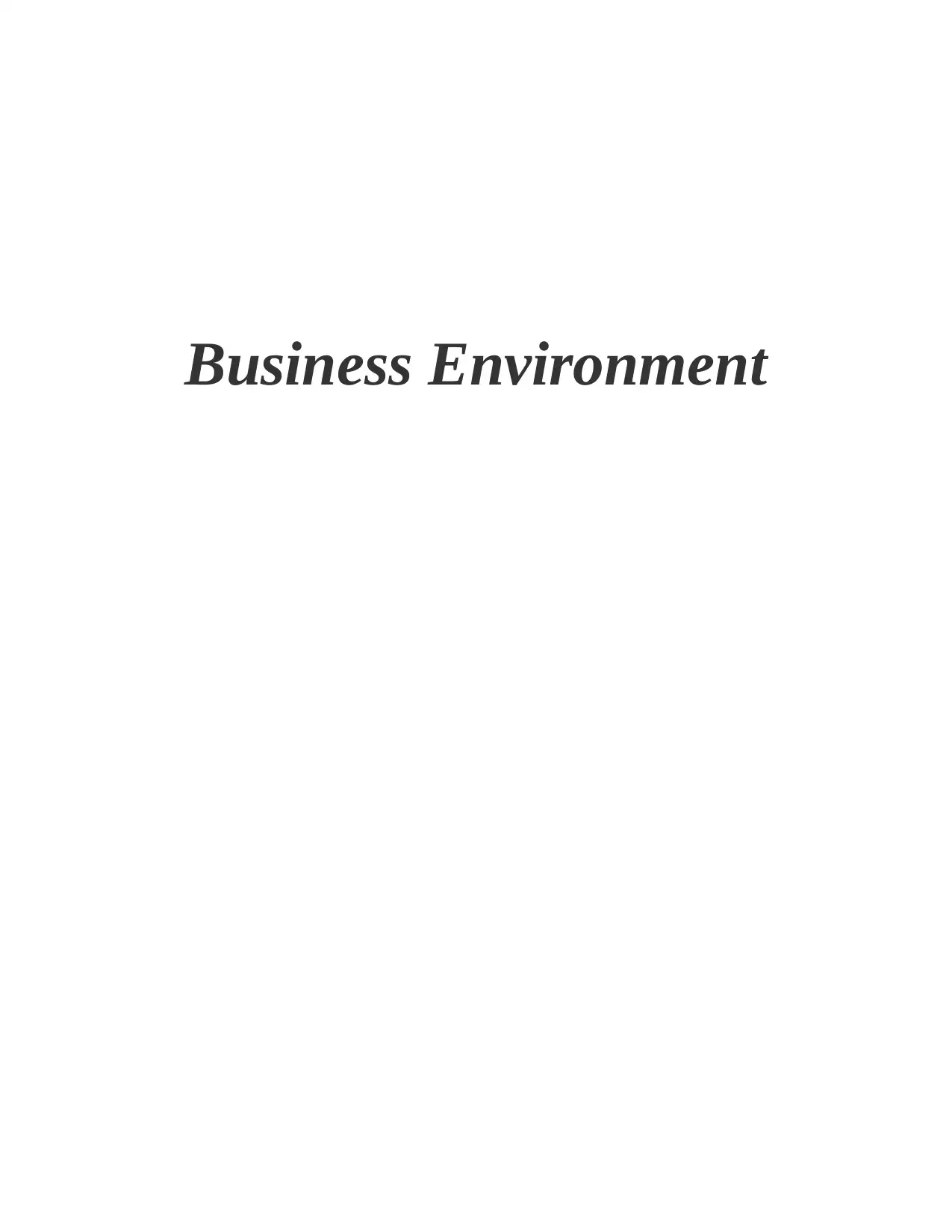
Business Environment
Paraphrase This Document
Need a fresh take? Get an instant paraphrase of this document with our AI Paraphraser
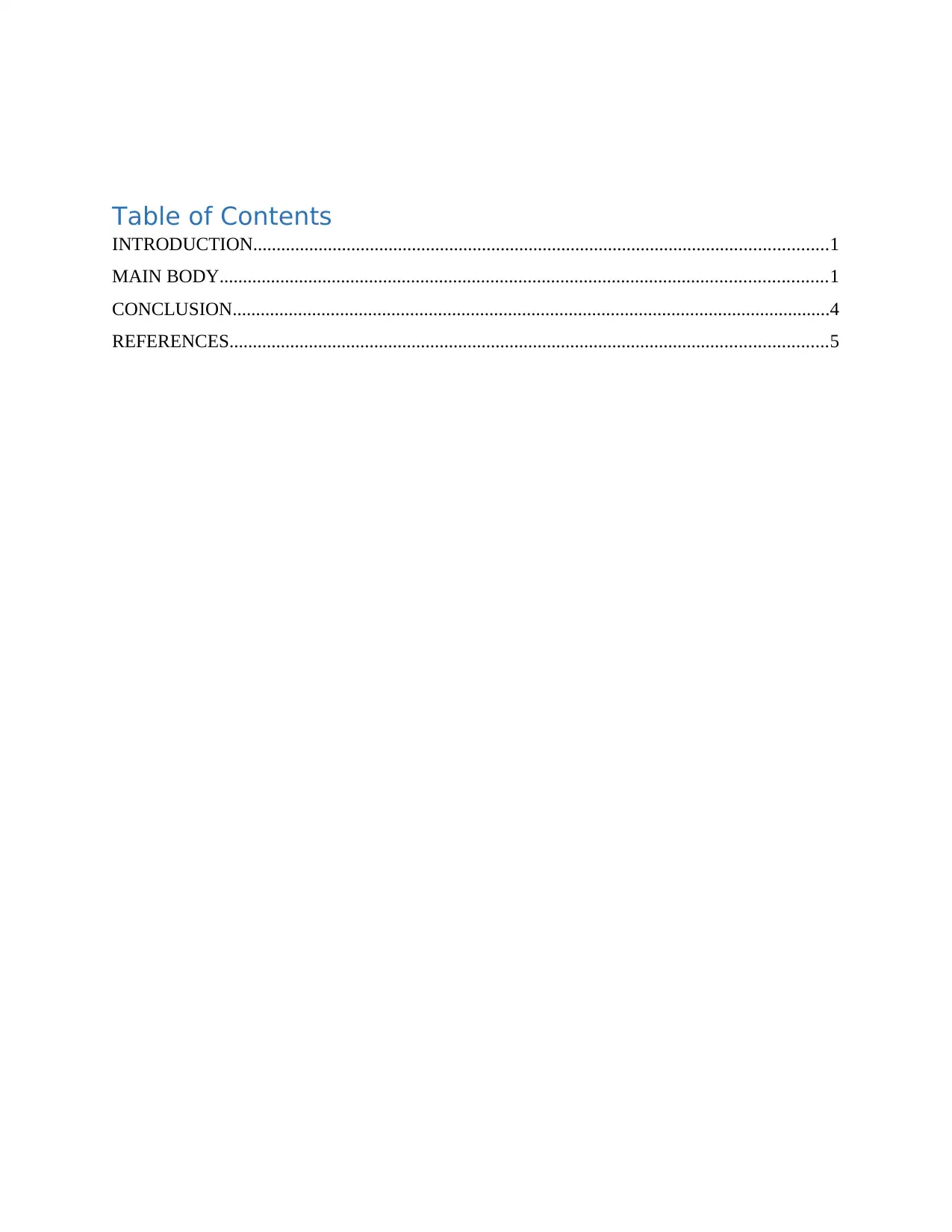
Table of Contents
INTRODUCTION...........................................................................................................................1
MAIN BODY..................................................................................................................................1
CONCLUSION................................................................................................................................4
REFERENCES................................................................................................................................5
INTRODUCTION...........................................................................................................................1
MAIN BODY..................................................................................................................................1
CONCLUSION................................................................................................................................4
REFERENCES................................................................................................................................5
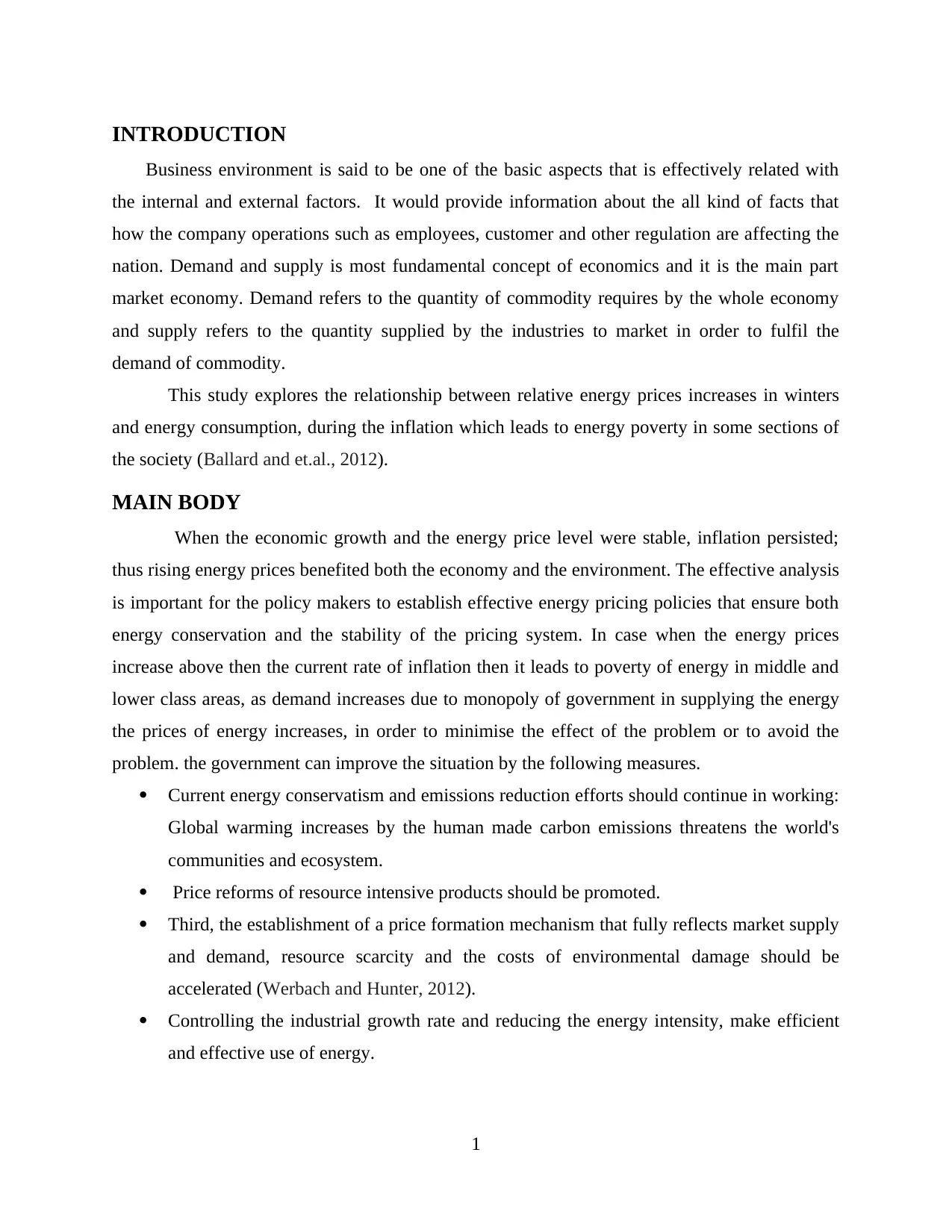
INTRODUCTION
Business environment is said to be one of the basic aspects that is effectively related with
the internal and external factors. It would provide information about the all kind of facts that
how the company operations such as employees, customer and other regulation are affecting the
nation. Demand and supply is most fundamental concept of economics and it is the main part
market economy. Demand refers to the quantity of commodity requires by the whole economy
and supply refers to the quantity supplied by the industries to market in order to fulfil the
demand of commodity.
This study explores the relationship between relative energy prices increases in winters
and energy consumption, during the inflation which leads to energy poverty in some sections of
the society (Ballard and et.al., 2012).
MAIN BODY
When the economic growth and the energy price level were stable, inflation persisted;
thus rising energy prices benefited both the economy and the environment. The effective analysis
is important for the policy makers to establish effective energy pricing policies that ensure both
energy conservation and the stability of the pricing system. In case when the energy prices
increase above then the current rate of inflation then it leads to poverty of energy in middle and
lower class areas, as demand increases due to monopoly of government in supplying the energy
the prices of energy increases, in order to minimise the effect of the problem or to avoid the
problem. the government can improve the situation by the following measures.
Current energy conservatism and emissions reduction efforts should continue in working:
Global warming increases by the human made carbon emissions threatens the world's
communities and ecosystem.
Price reforms of resource intensive products should be promoted.
Third, the establishment of a price formation mechanism that fully reflects market supply
and demand, resource scarcity and the costs of environmental damage should be
accelerated (Werbach and Hunter, 2012).
Controlling the industrial growth rate and reducing the energy intensity, make efficient
and effective use of energy.
1
Business environment is said to be one of the basic aspects that is effectively related with
the internal and external factors. It would provide information about the all kind of facts that
how the company operations such as employees, customer and other regulation are affecting the
nation. Demand and supply is most fundamental concept of economics and it is the main part
market economy. Demand refers to the quantity of commodity requires by the whole economy
and supply refers to the quantity supplied by the industries to market in order to fulfil the
demand of commodity.
This study explores the relationship between relative energy prices increases in winters
and energy consumption, during the inflation which leads to energy poverty in some sections of
the society (Ballard and et.al., 2012).
MAIN BODY
When the economic growth and the energy price level were stable, inflation persisted;
thus rising energy prices benefited both the economy and the environment. The effective analysis
is important for the policy makers to establish effective energy pricing policies that ensure both
energy conservation and the stability of the pricing system. In case when the energy prices
increase above then the current rate of inflation then it leads to poverty of energy in middle and
lower class areas, as demand increases due to monopoly of government in supplying the energy
the prices of energy increases, in order to minimise the effect of the problem or to avoid the
problem. the government can improve the situation by the following measures.
Current energy conservatism and emissions reduction efforts should continue in working:
Global warming increases by the human made carbon emissions threatens the world's
communities and ecosystem.
Price reforms of resource intensive products should be promoted.
Third, the establishment of a price formation mechanism that fully reflects market supply
and demand, resource scarcity and the costs of environmental damage should be
accelerated (Werbach and Hunter, 2012).
Controlling the industrial growth rate and reducing the energy intensity, make efficient
and effective use of energy.
1
⊘ This is a preview!⊘
Do you want full access?
Subscribe today to unlock all pages.

Trusted by 1+ million students worldwide
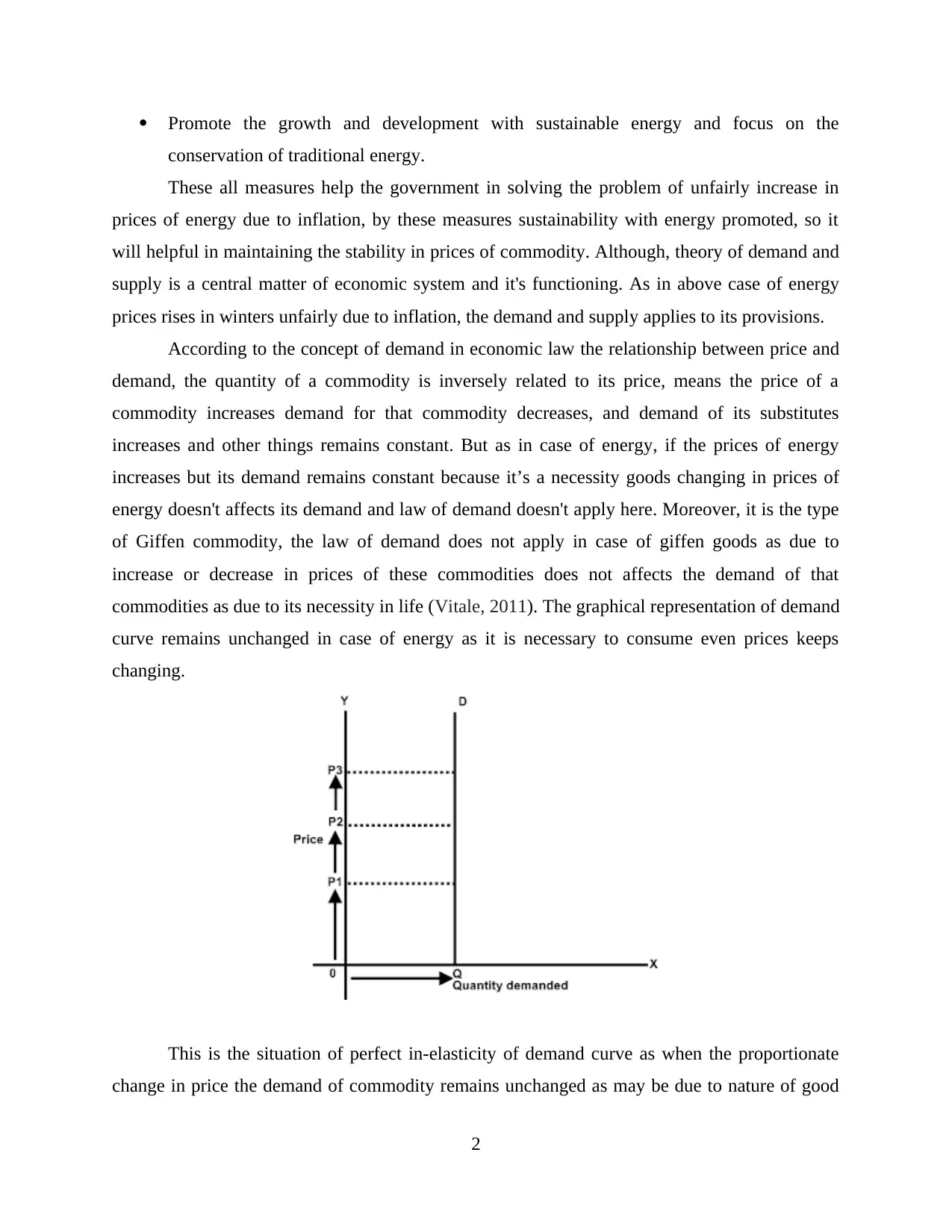
Promote the growth and development with sustainable energy and focus on the
conservation of traditional energy.
These all measures help the government in solving the problem of unfairly increase in
prices of energy due to inflation, by these measures sustainability with energy promoted, so it
will helpful in maintaining the stability in prices of commodity. Although, theory of demand and
supply is a central matter of economic system and it's functioning. As in above case of energy
prices rises in winters unfairly due to inflation, the demand and supply applies to its provisions.
According to the concept of demand in economic law the relationship between price and
demand, the quantity of a commodity is inversely related to its price, means the price of a
commodity increases demand for that commodity decreases, and demand of its substitutes
increases and other things remains constant. But as in case of energy, if the prices of energy
increases but its demand remains constant because it’s a necessity goods changing in prices of
energy doesn't affects its demand and law of demand doesn't apply here. Moreover, it is the type
of Giffen commodity, the law of demand does not apply in case of giffen goods as due to
increase or decrease in prices of these commodities does not affects the demand of that
commodities as due to its necessity in life (Vitale, 2011). The graphical representation of demand
curve remains unchanged in case of energy as it is necessary to consume even prices keeps
changing.
This is the situation of perfect in-elasticity of demand curve as when the proportionate
change in price the demand of commodity remains unchanged as may be due to nature of good
2
conservation of traditional energy.
These all measures help the government in solving the problem of unfairly increase in
prices of energy due to inflation, by these measures sustainability with energy promoted, so it
will helpful in maintaining the stability in prices of commodity. Although, theory of demand and
supply is a central matter of economic system and it's functioning. As in above case of energy
prices rises in winters unfairly due to inflation, the demand and supply applies to its provisions.
According to the concept of demand in economic law the relationship between price and
demand, the quantity of a commodity is inversely related to its price, means the price of a
commodity increases demand for that commodity decreases, and demand of its substitutes
increases and other things remains constant. But as in case of energy, if the prices of energy
increases but its demand remains constant because it’s a necessity goods changing in prices of
energy doesn't affects its demand and law of demand doesn't apply here. Moreover, it is the type
of Giffen commodity, the law of demand does not apply in case of giffen goods as due to
increase or decrease in prices of these commodities does not affects the demand of that
commodities as due to its necessity in life (Vitale, 2011). The graphical representation of demand
curve remains unchanged in case of energy as it is necessary to consume even prices keeps
changing.
This is the situation of perfect in-elasticity of demand curve as when the proportionate
change in price the demand of commodity remains unchanged as may be due to nature of good
2
Paraphrase This Document
Need a fresh take? Get an instant paraphrase of this document with our AI Paraphraser
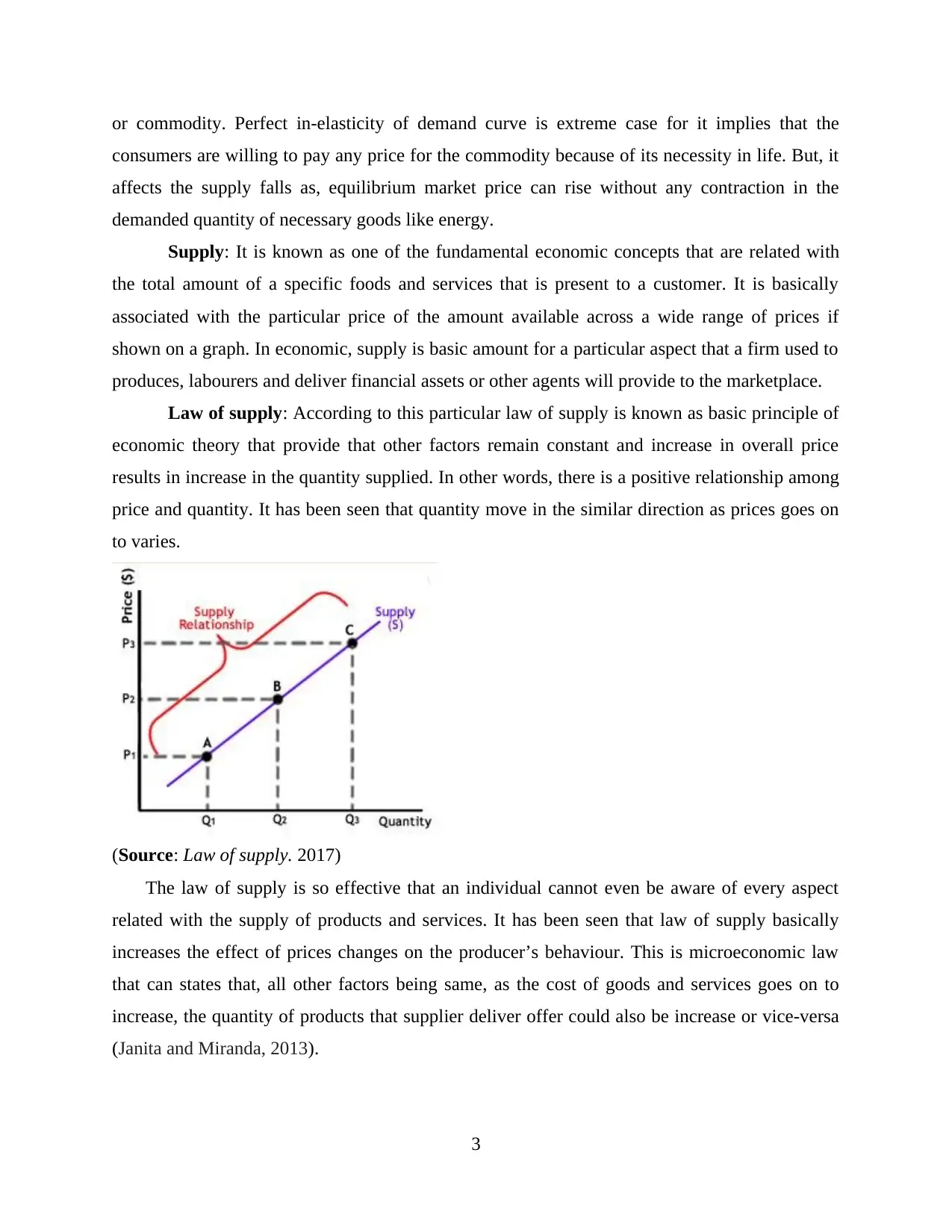
or commodity. Perfect in-elasticity of demand curve is extreme case for it implies that the
consumers are willing to pay any price for the commodity because of its necessity in life. But, it
affects the supply falls as, equilibrium market price can rise without any contraction in the
demanded quantity of necessary goods like energy.
Supply: It is known as one of the fundamental economic concepts that are related with
the total amount of a specific foods and services that is present to a customer. It is basically
associated with the particular price of the amount available across a wide range of prices if
shown on a graph. In economic, supply is basic amount for a particular aspect that a firm used to
produces, labourers and deliver financial assets or other agents will provide to the marketplace.
Law of supply: According to this particular law of supply is known as basic principle of
economic theory that provide that other factors remain constant and increase in overall price
results in increase in the quantity supplied. In other words, there is a positive relationship among
price and quantity. It has been seen that quantity move in the similar direction as prices goes on
to varies.
(Source: Law of supply. 2017)
The law of supply is so effective that an individual cannot even be aware of every aspect
related with the supply of products and services. It has been seen that law of supply basically
increases the effect of prices changes on the producer’s behaviour. This is microeconomic law
that can states that, all other factors being same, as the cost of goods and services goes on to
increase, the quantity of products that supplier deliver offer could also be increase or vice-versa
(Janita and Miranda, 2013).
3
consumers are willing to pay any price for the commodity because of its necessity in life. But, it
affects the supply falls as, equilibrium market price can rise without any contraction in the
demanded quantity of necessary goods like energy.
Supply: It is known as one of the fundamental economic concepts that are related with
the total amount of a specific foods and services that is present to a customer. It is basically
associated with the particular price of the amount available across a wide range of prices if
shown on a graph. In economic, supply is basic amount for a particular aspect that a firm used to
produces, labourers and deliver financial assets or other agents will provide to the marketplace.
Law of supply: According to this particular law of supply is known as basic principle of
economic theory that provide that other factors remain constant and increase in overall price
results in increase in the quantity supplied. In other words, there is a positive relationship among
price and quantity. It has been seen that quantity move in the similar direction as prices goes on
to varies.
(Source: Law of supply. 2017)
The law of supply is so effective that an individual cannot even be aware of every aspect
related with the supply of products and services. It has been seen that law of supply basically
increases the effect of prices changes on the producer’s behaviour. This is microeconomic law
that can states that, all other factors being same, as the cost of goods and services goes on to
increase, the quantity of products that supplier deliver offer could also be increase or vice-versa
(Janita and Miranda, 2013).
3
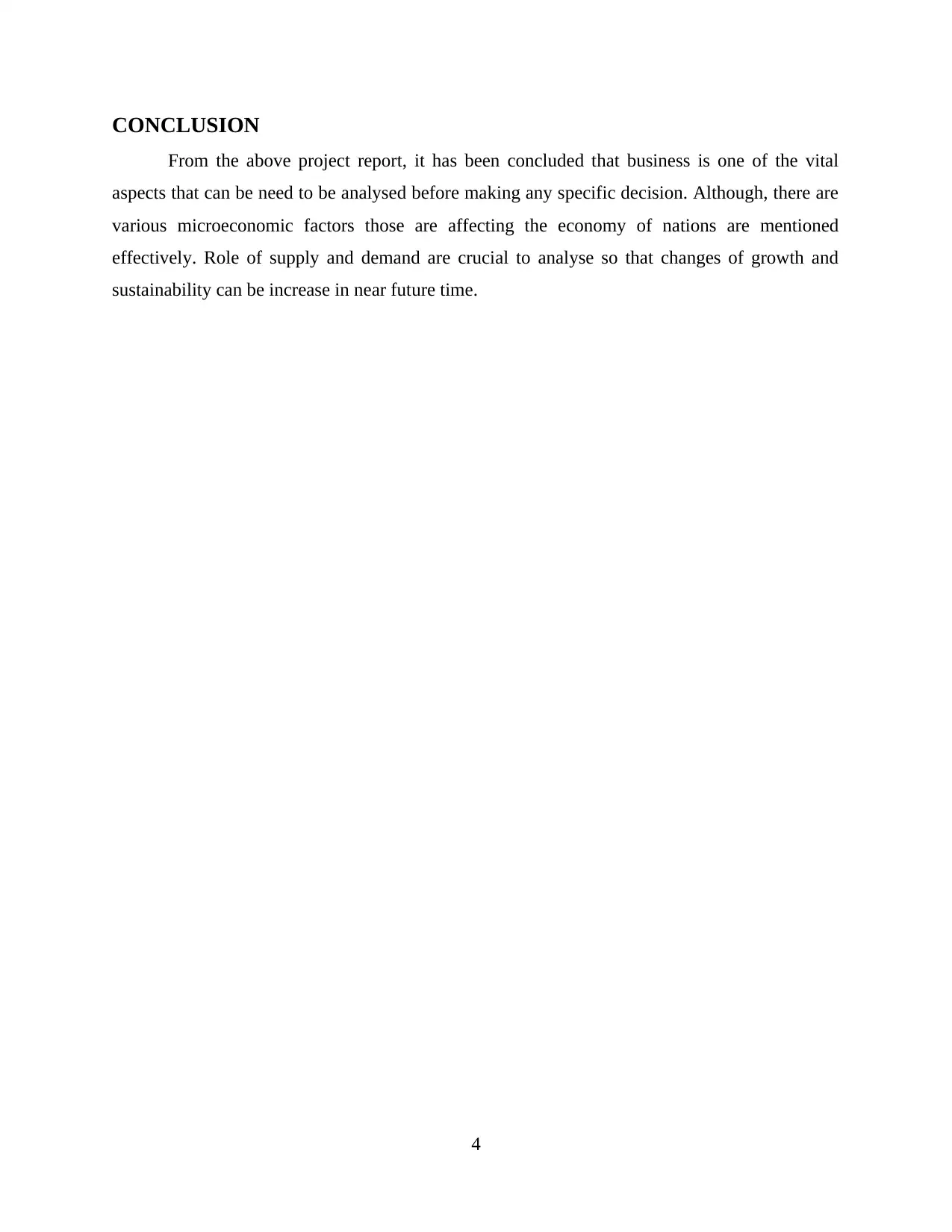
CONCLUSION
From the above project report, it has been concluded that business is one of the vital
aspects that can be need to be analysed before making any specific decision. Although, there are
various microeconomic factors those are affecting the economy of nations are mentioned
effectively. Role of supply and demand are crucial to analyse so that changes of growth and
sustainability can be increase in near future time.
4
From the above project report, it has been concluded that business is one of the vital
aspects that can be need to be analysed before making any specific decision. Although, there are
various microeconomic factors those are affecting the economy of nations are mentioned
effectively. Role of supply and demand are crucial to analyse so that changes of growth and
sustainability can be increase in near future time.
4
⊘ This is a preview!⊘
Do you want full access?
Subscribe today to unlock all pages.

Trusted by 1+ million students worldwide
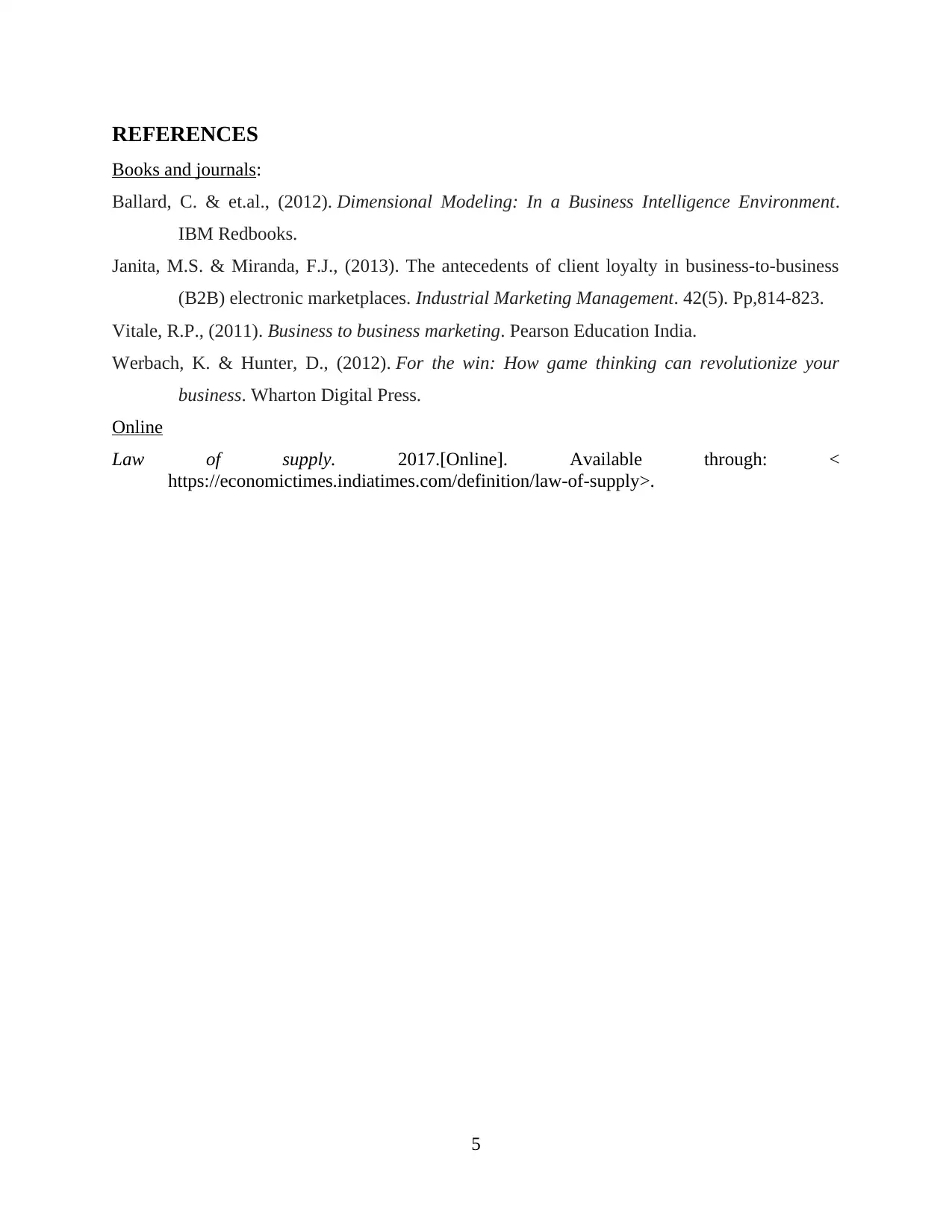
REFERENCES
Books and journals:
Ballard, C. & et.al., (2012). Dimensional Modeling: In a Business Intelligence Environment.
IBM Redbooks.
Janita, M.S. & Miranda, F.J., (2013). The antecedents of client loyalty in business-to-business
(B2B) electronic marketplaces. Industrial Marketing Management. 42(5). Pp,814-823.
Vitale, R.P., (2011). Business to business marketing. Pearson Education India.
Werbach, K. & Hunter, D., (2012). For the win: How game thinking can revolutionize your
business. Wharton Digital Press.
Online
Law of supply. 2017.[Online]. Available through: <
https://economictimes.indiatimes.com/definition/law-of-supply>.
5
Books and journals:
Ballard, C. & et.al., (2012). Dimensional Modeling: In a Business Intelligence Environment.
IBM Redbooks.
Janita, M.S. & Miranda, F.J., (2013). The antecedents of client loyalty in business-to-business
(B2B) electronic marketplaces. Industrial Marketing Management. 42(5). Pp,814-823.
Vitale, R.P., (2011). Business to business marketing. Pearson Education India.
Werbach, K. & Hunter, D., (2012). For the win: How game thinking can revolutionize your
business. Wharton Digital Press.
Online
Law of supply. 2017.[Online]. Available through: <
https://economictimes.indiatimes.com/definition/law-of-supply>.
5
1 out of 7
Related Documents
Your All-in-One AI-Powered Toolkit for Academic Success.
+13062052269
info@desklib.com
Available 24*7 on WhatsApp / Email
![[object Object]](/_next/static/media/star-bottom.7253800d.svg)
Unlock your academic potential
Copyright © 2020–2025 A2Z Services. All Rights Reserved. Developed and managed by ZUCOL.





